Learning Circle #2
is available in a different blog post. CLICK HERE!
Simple and Complex Content Activity
I like this activity. I think this activity is something you can do with the students. As a teacher, I never thought about the complex and simpler questions. We teachers and future teachers sometimes forget to think how difficult our materials are, and I think this is the best way to test it out. I think this activity is extremely helpful in a way that if a teacher is planning to teach different grade levels, they could tone down or tone up the difficulty depending on the grade level. Teachers could also use this to help different students understand the concept at their level of understanding. I also see the dangers of creating simpler content for the students. When we overuse simpler content, we strip the student’s ability to enhance their critical and analytic skills. In the same way, overusing complex content may discourage students from learning because it could be too difficult for them.
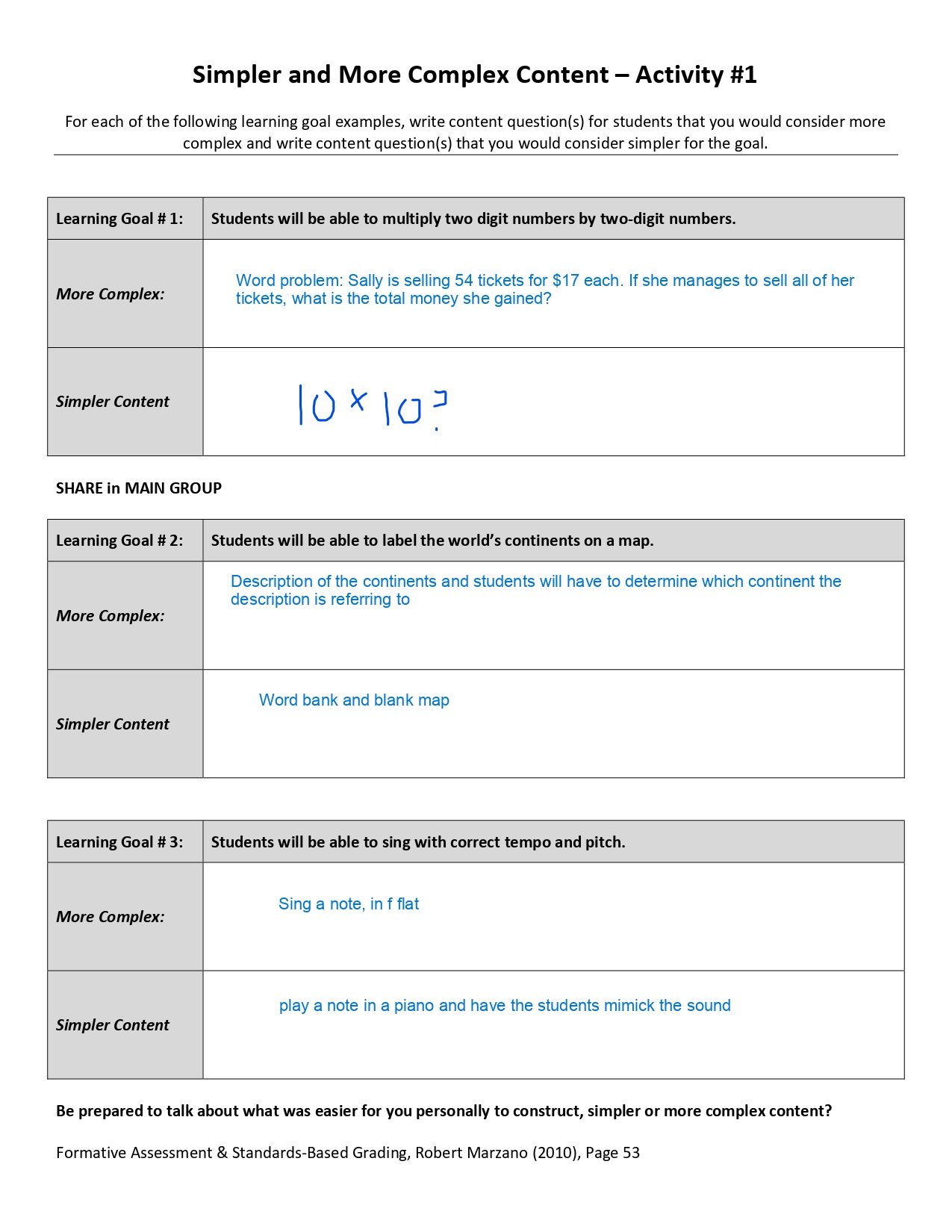
Bloom’s Taxonomy
I have heard about Bloom’s taxonomy before, but not in detail. One of my professors has mentioned it before and said their concerns about the concept. Now that I think about it, the words in the Boom’s Taxonomy triangle remind me a lot of the curriculum. As I see it in the curriculum, I am certain that it does not follow the pyramid. As for teaching, I do not think we can follow this pyramid every time. I feel like it follows the traditional way of learning. However, sometimes you have to use direct teaching especially when teaching new content. This is what I was wondering about as well. I was wondering how I could introduce a new topic to the students without using direct teaching.
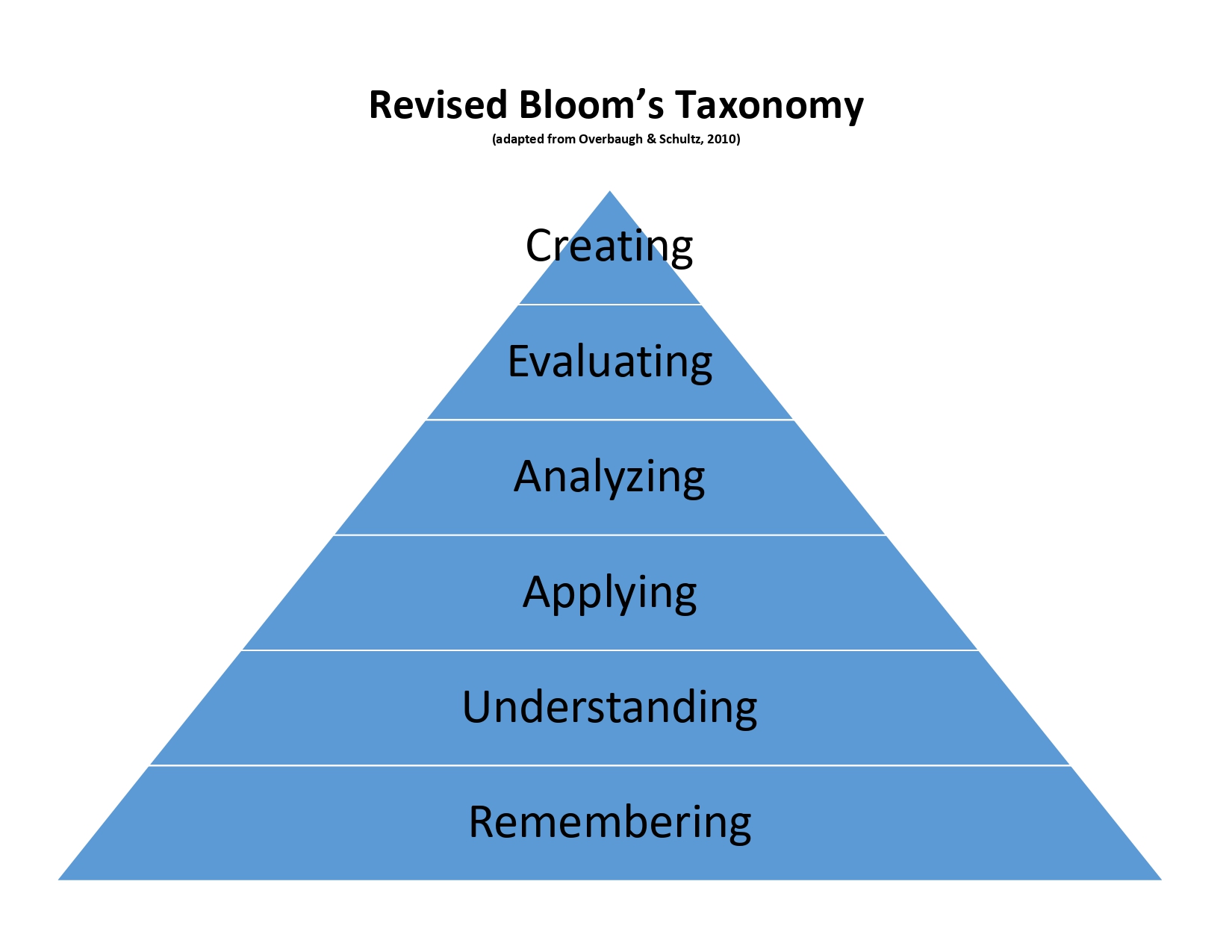
Simple and Complex Content Activity #2
My groupmates and I found the activity easy except when deciding which level of Bloom’s Taxonomy the question falls into. As the lesson said, the boundaries between the levels are very blurry, so it depends on the person. The blue is our group’s answer and the red one is the professor’s answer. I could see why the red one is appropriate but I can also see why we chose the blue ones.
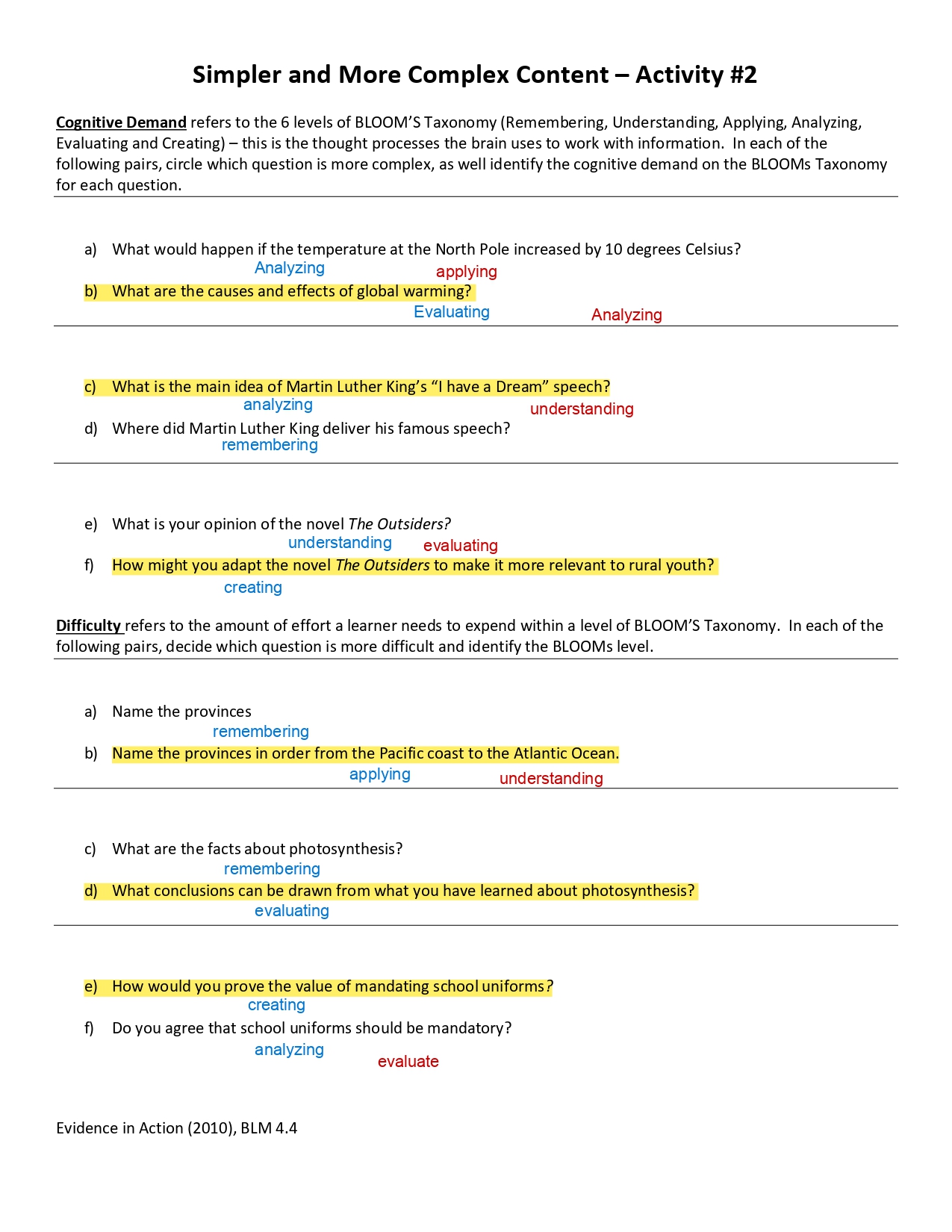
The Cheat Sheet
It is always great to receive good resources from the courses (that I paid for). For me, this is a good resource. I will make sure to use this in the future!
I can see how some of these prompts could be useful in assessments like exit slips and even during an activity. It is always nice to ask students open-ended questions. That way, I receive different answers and opinions (If I am asking generally). Although it is always nice to receive the “right” answer, whatever right means, I am always curious to see (and read) each student’s perspectives and take on the topic, or concept, we learned that day.
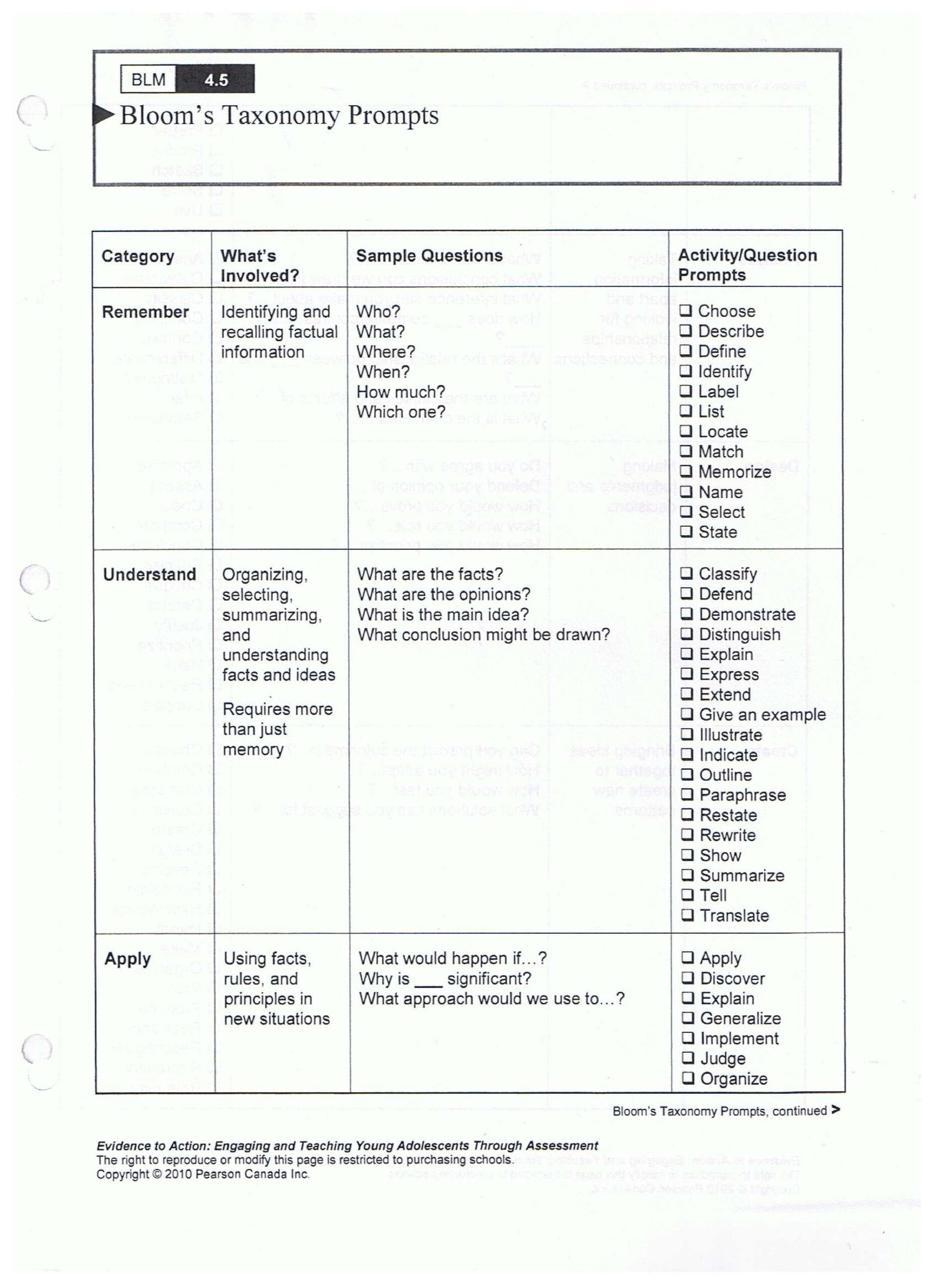
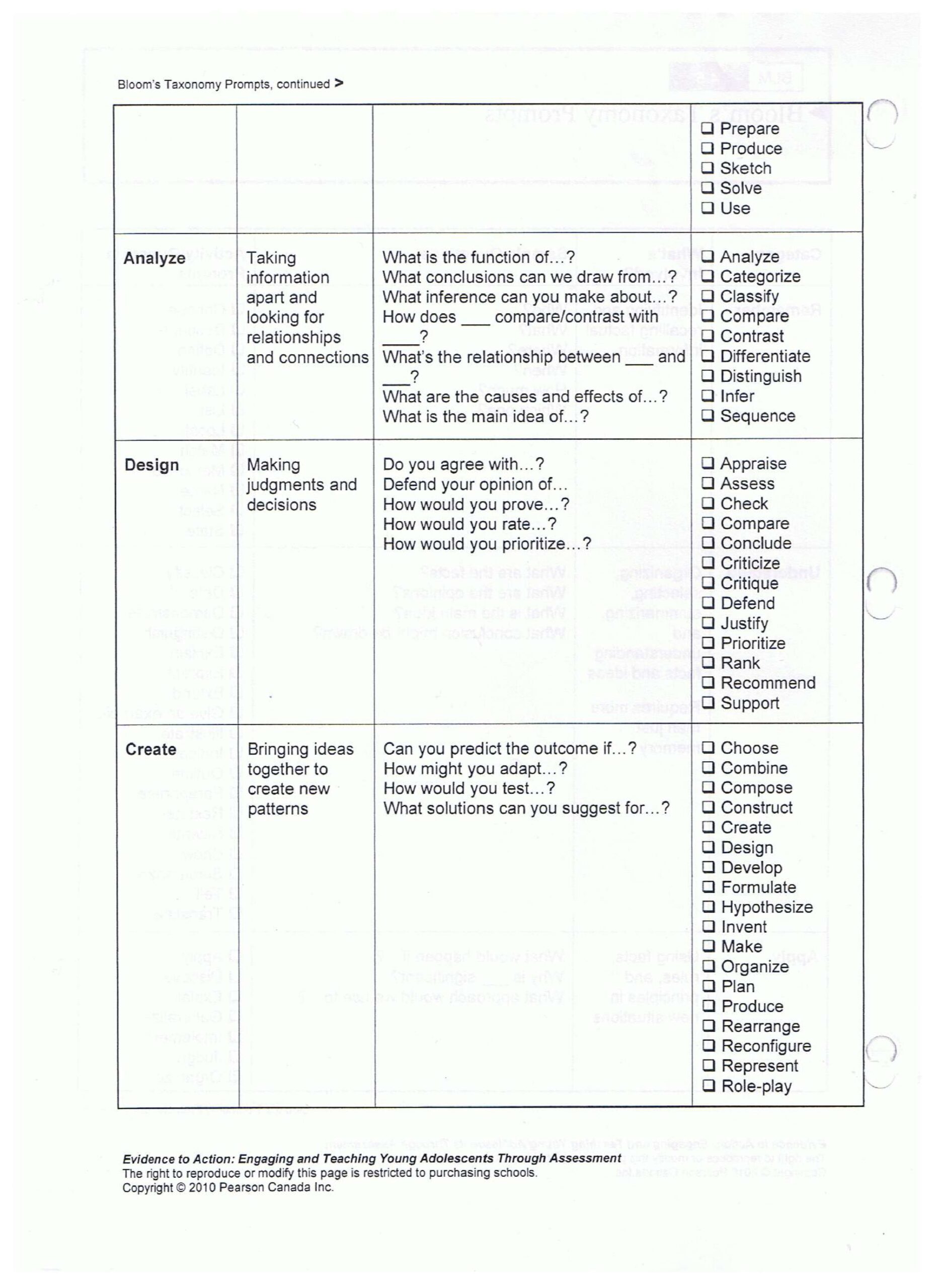
Simple and Complex Content Activity #3
Our group used the “cheat sheet” for the entirety of this activity. We thought that if we did not use it, this activity would take us ages to complete. One thing that stood out to me was how many unique questions we could create using the prompts. Another reason why I love this resource so much.
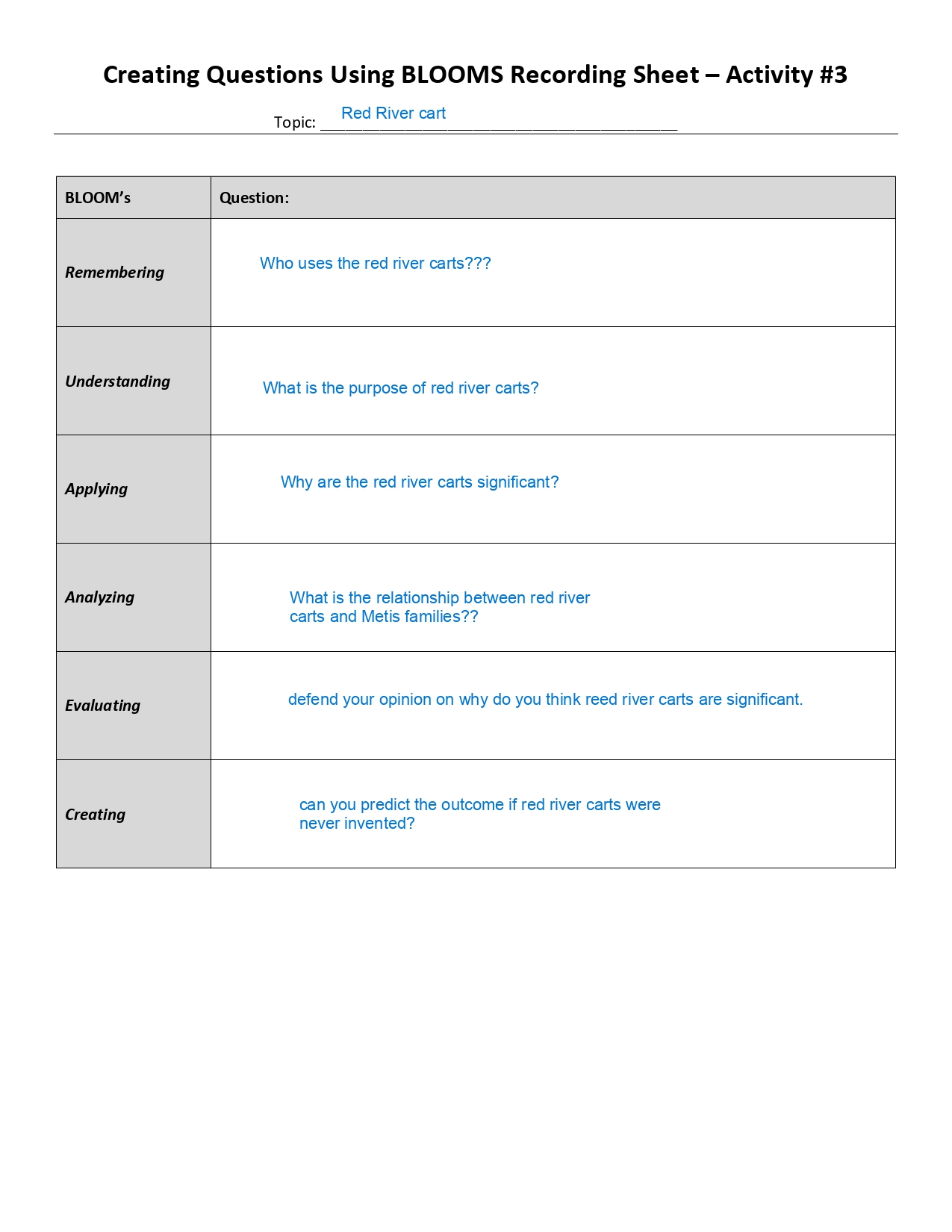
Talking About Shapes: Activity
I was very excited to do this activity because I love math! The thing is, this is not just for “math people” (We are all math people by the way). Anyone, no matter their position and life and such, could say something about the two shapes. Some people who do not see themselves as a “math person” could figure out something that a “math person” might miss and vice versa. This is why I like the diversity of the class. People came from different background and different interest will have different perspectives about this two shapes.

Talking About Shapes: Self-Assessment and Peer Assessment (Poll Guru)
I gave myself a 4 because I think I did well listing all the appropriate comparisons between the two shapes. However, I could have expanded more into complex comparisons (such as how many squares can I make with each square, and so on). My partner gave me the same grade while I gave them one level higher than their initial grade. My partner told me that they were not a Math person which I argued that they were. It seems as though people have this negative notion that mathematics is for “smart” people or people who can solve mathematical questions. Math is everywhere. People are probably doing mathematics in some way or the other. Mathematics does not have to be about numbers or shapes. It is an art of life.


SYMBOL
Today, the symbol is a lightbulb. Today is a lightbulb moment for me. Learning new things OR more things about teaching strategies as well as cultivating questions. I hope to get more lightbulb moments hopefully about assessments and evaluations in upcoming lectures!
